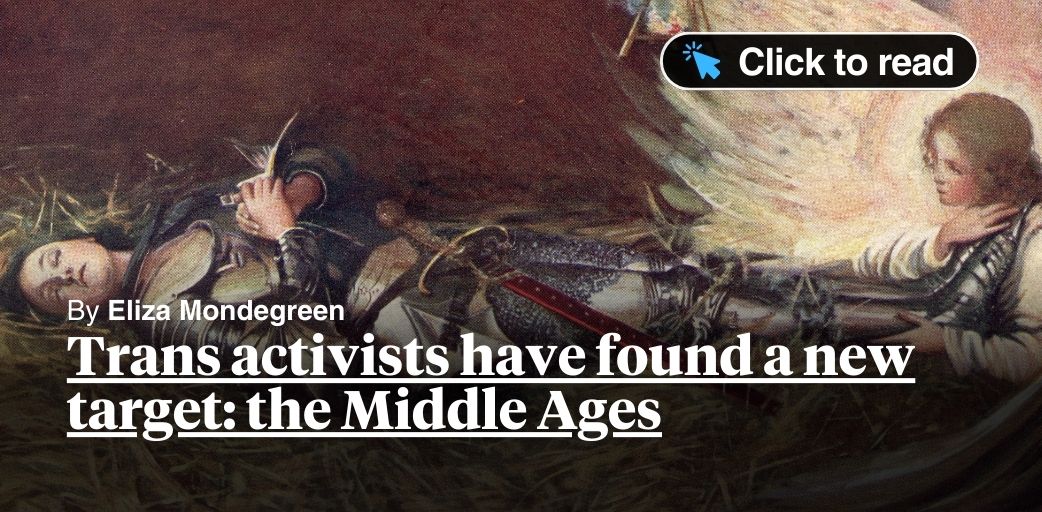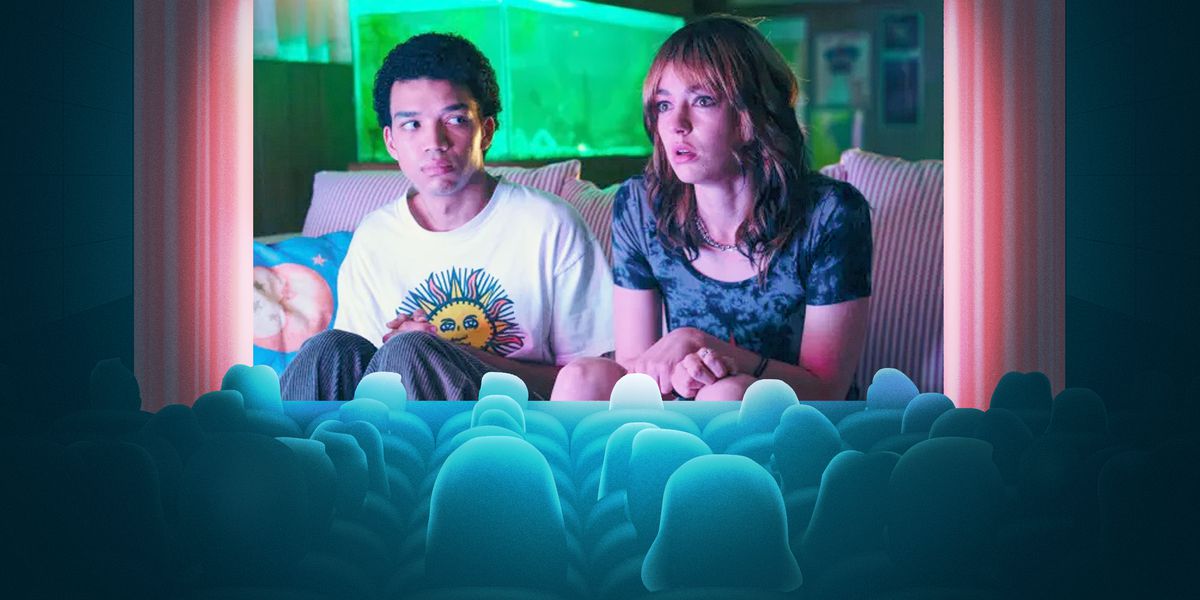
by Eliza Mondegreen
 A sleeping Joan of Arc, who has been retrospectively ‘transed’. Credit: Getty
A sleeping Joan of Arc, who has been retrospectively ‘transed’. Credit: Getty
In what is sure to be one of the academic highlights of 2024, The English Historical Review has published a creative writing exercise: “The Trans Middle Ages: Incorporating Transgender and Intersex Studies into the History of Medieval Sexuality”, with a rich discussion of how “transmisogyny operated as a distinct form of othering within medieval Byzantine gender frameworks.” If your first thought was “what Trans Middle Ages?” or “how did ‘transmisogyny,’ a term coined in 2007, operate several centuries earlier?”, you’re not alone.
This alt-history version of the Middle Ages had its ups and downs. Alongside persecution, the author argues that “medieval societies associated trans and genderqueer identities with proximity to, rather than distance from, the divine”, casting the Middle Ages as a kind of “queer utopia” and rendering medieval religion “fundamentally queer”. Apparently, a genderqueer analysis is “indispensable” to “understanding the connections between gender and faith in the Middle Ages”.
The author holds as axiomatic the idea that trans people “have always existed in all human cultures”. There are only “specifically historicised forms of trans experience”. This would indeed be impossible to prove but useful if only it were so.
This isn’t new. Trans activists in the academy have abandoned their training in historical methods in order to reimagine figures from Roman emperors to Joan of Arc, Queen Elizabeth I (as far as I know, no such attempts have been made on QEII), and author Louisa May Alcott as transgender. Just a few months ago, the North Hertfordshire Museum took the initiative to change up the pronouns the museum used to refer to one of Rome’s most notorious emperors, noting that Elagabalus, “long regarded as mad and one of the worst Roman emperors […] is perhaps now best thought of as a transgender teen”.
But there’s a dark underside to these absurdities. For the vast majority of human history, the concept of gender identity — much less transgender identities — didn’t exist. This isn’t to say that no one before the 20th century ever felt somehow wrong in the body he or she was born in or that no one ever wished that they’d been born a boy instead of a girl.
“Trans” is something else, though: the product of new medical technologies and new ways of thinking about identity that change the meaning of such pains and desires. As the philosopher of science Ian Hacking put it, new concepts and technologies create new ways of being human that didn’t exist before.
There’s a lot of sexism involved (you know a female historical figure is at risk of being transed if she was in any way unconventional for the time and place when she live). But that’s not the only thing that’s troubling. There’s something grotesque about the way trans activists turn long-dead historical figures into marionettes for a new and radical ideology.
Why are these activists unwilling to acknowledge the newness of what they have created? Surely it would have been possible to argue that — having progressed so far from our benighted past — we have discovered bold new ways of being and doing that deserve recognition and protection. Why not own their invention, rather than impose it on those who came before them?
Instead, they opted for rampant and shameless historical revisionism, turning the past into quicksand. Oceania has always been at war with Eastasia.
There is something totalitarian about this act of rewriting and how it abolishes the possibility that other perspectives once existed. If we can’t acknowledge that we have created a new way of being human — being “trans” — we destroy our ability to look with curiosity on that creation and consider alternative ways of constructing ourselves as individuals and societies in the future. We leave ourselves with no solid ground to stand on, and no way out of our current prejudices and hyperfixations.



